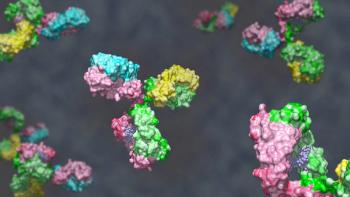
- BioPharm International-10-01-2012
- Volume 25
- Issue 10
Considerations in Outsourced Vaccine Manufacturing
Marco Chacon of Paragon Bioservices discusses the challenges associated with outsourced vaccine manufacturing.
For a CMO, vaccine manufacturing requires the capability to produce a diverse set of products at different scales for multiple clients. BioPharm International spoke with Marco Chacon, president and CEO of Paragon Bioservices, about the challenges associated with outsourced vaccine manufacturing. Paragon Bioservices is a midsized CMO with expertise in vaccine manufacturing, including the production of of virus-like particle (VLP) vaccines.
Marco Chacón
BioPharm: What are Paragon's capabilities with regards to vaccines?
Chacón: The types of vaccines we produce can be viral or bacterial antigens of one sort or another. As long as they are recombinantly produced, the nature of the protein doesn't matter. We can do both nonclinical and GMP manufacturing in several systems, including bacterial, yeast, mammalian, and insect cells at volumes up to 500 L in mammalian or insect cells, and up to 300 L for microbial systems. Over the past several years, we have put together a number of capabilities. We have found that in addition to having the right manufacturing tools, one also has to have the right analytics, and at the tail end, the quality teams such that the material is produced while observing all the regulations.
BioPharm: Are there any challenges that differentiate vaccine manufacture from the manufacture of other classes of proteins?
Chacón: If the vaccine that you're producing falls into the category of recombinant protein expression, such as VLP-type vaccines, the only challenge is to assemble those particles correctly and purify them. On the whole, a company that is capable of doing recombinant protein expression and purification ought to be able to do the same with VLP-type vaccines.
The difference is more significant when you're making whole-cell or whole-virus vaccines, when the safety classification of the organisms must be considered. A company may have [biosafety level] BSL 2 capabilities, but not BSL 3.
BioPharm: To what extent do you use quality-by-design (QbD) principles in your processes?
Chacón: QbD is something newer to us, but it's something that we have embraced, and we're building more systems so that we can execute our projects and deliver on that level. We have recently been awarded a large government contract, and the sponsoring agency requires that we adopt QbD principles in the execution of this contract.
BioPharm: When comparing clients with whom you have previously done development work versus those that come to you just for manufacturing, is there a difference in how you approach technology transfer/process development under the two circumstances?
Chacón: For those projects in which we have been with the client from making research-grade vaccine targets, by the time it goes to the GMP suite we know that process inside and out. But it doesn't mean we can't work well with a reasonably sophisticated client that reaches out to us at a later stage, let's just say, right before they want to manufacture, or make a toxicology lot. We have requirements in place that compel that client to provide us with all pertinent information, thus making the tech transfer process the best it can be. We will characterize any original reagents, cell banks, and the like according to the requirements put in place by our Quality unit, and there there should be no significant problems.
Occasionally, we may get a project that is grossly undefined, or where the expectation of the client may be a bit too unrealistic. But as long as we have requirements that we stick by in terms of accepting a project, more often than not those problems can be avoided.
BioPharm: Given the diversity of forms for vaccines (i.e., VLPs, viruses, protein antigens), what strategies do you have for ensuring your facility can meet the demands of such varied production requirements?
Chacón: We can work with a variety of systems with relative ease, and this has to do with how our GMP services were started. We were in the business of providing preclinical services for around 17 or 18 years. We developed a number of skills and capabilities at smaller scale and with different reagent grades to produce recombinant proteins, VLPs, and different viral vectors including adenovirus, and lentivirus. We had to build those capabilities, and add the analytics required to oversee a process and characterize the final product. When we added GMP manufacturing, it was a very logical extension of those preclinical services. We went ahead and built in the versatility to support a variety of services.
Technology changes, and we need to embrace that. The challenge is on us, to look to the future and anticipate those changes to remain at the cutting edge and be of greatest help and assistance to our clients. We need to be mindful of how the marketplace changes, because to be successful at growing a company you need to be sure that your offerings are in tune with such demands. Today, the large pharmaceutical companies that used to do everything on their own send out many projects including vaccine production services. In fact, it goes across the whole panorama of needs, from preclinical targets, to vaccine candidates, to GMP manufacturing for clinical trials. By keeping a keen eye as to where those demands are coming from, what type of technologies the marketplace is asking us to provide, we need to be swift and nimble and move with the times.
On the manufacturing side, I think the adoption of new technology is critical. The past 10 years or so, certainly in mammalian and insect cell expression, we've seen a shift to the use of single-use disposables. With single-use disposables you can do mammalian or insect runs up to 2000 L in a single run, although we only go up to 500 L. Disposables cut down on cost, because cleaning protocols are extremely reduced or not necessary for many aspects of the manufacturing process.
Articles in this issue
over 13 years ago
BioPharm International, October 2012 Issue (PDF)over 13 years ago
India Enforces Stricter Patent Lawsover 13 years ago
A Manufacturing-Capacity Sharing Modelover 13 years ago
FDA and the Importance of Confidentialityover 13 years ago
New Era for Generic Drugsover 13 years ago
Discovery Pipeline: Nanoparticles for Targeted Deliveryover 13 years ago
Considerations in Vaccine Packaging and Delivery Systemsover 13 years ago
Sizing the Market for Contract Manufacturingover 13 years ago
Bringing Innovation to Neglected Disease R&DNewsletter
Stay at the forefront of biopharmaceutical innovation—subscribe to BioPharm International for expert insights on drug development, manufacturing, compliance, and more.




